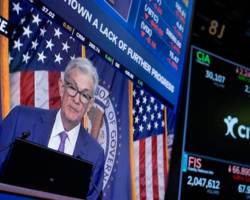Market Surge Continues: S&P 500 and NASDAQ Hit Record Highs After Fed’s Rate Cut | Daily Market Analysis

Key events:
- UK - BoE MPC Member Pill Speaks
- Canada - Employment Change (Oct)
- Canada - Unemployment Rate (Oct)
- USA - Michigan Consumer Sentiment (Nov)
- USA - FOMC Member Bowman Speaks
The S&P 500 marked another milestone on Thursday, reaching fresh record highs as investor optimism continued following the latest interest rate cut from the Federal Reserve. This post-election rally signals a strong vote of confidence from the markets, underscoring expectations that the Fed’s monetary policy adjustments will support economic growth.
The S&P 500 index closed 0.8% higher, setting a new all-time high of 5,973.10. The NASDAQ Composite also saw gains, rising 1.5% to its own record close, while the Dow Jones Industrial Average remained mostly flat.
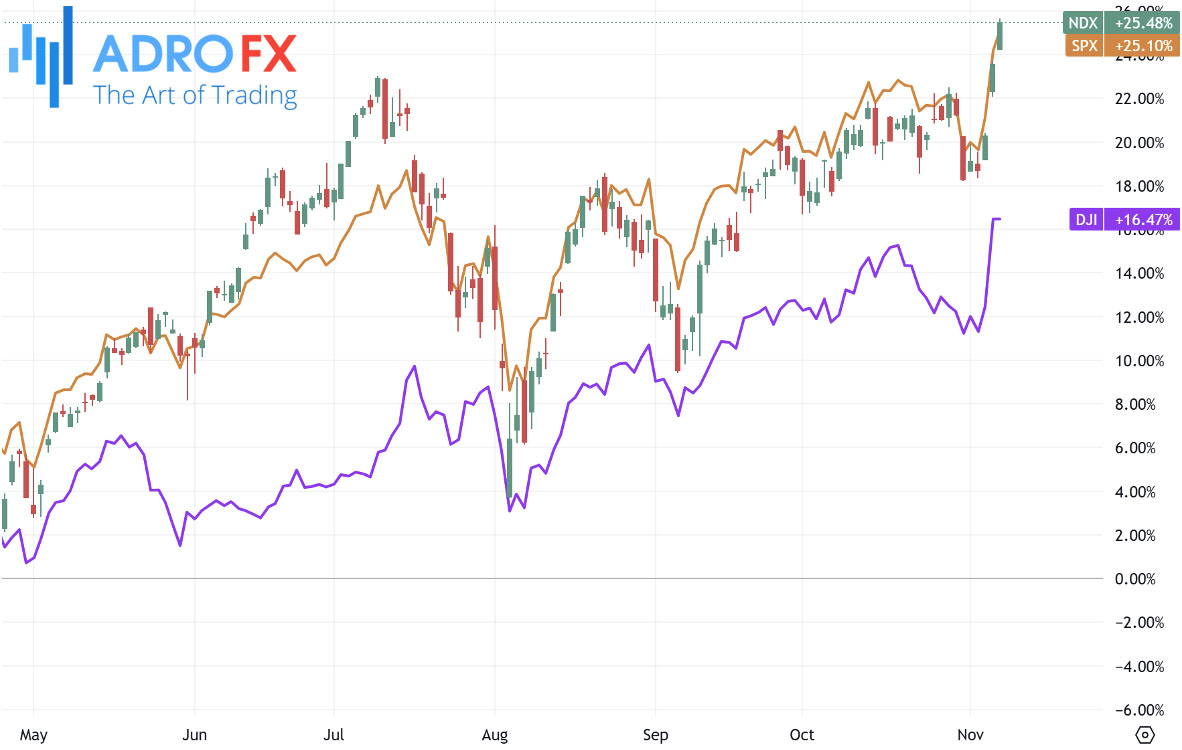
This rally aligns with the Federal Open Market Committee's decision to cut the benchmark borrowing rate by 25 basis points, bringing it to a target range of 4.50%-4.75% during its November meeting. Fed Chair Jerome Powell highlighted that the bank’s approach remains cautious, noting that although inflation has begun to slow towards the Fed's 2% goal, more data is needed to guide future rate decisions.
The US Dollar edged down following Powell’s remarks, as he offered limited direction on the Fed’s next steps regarding rates. According to CME Group's Fed Watch Tool, market participants now see a 75% chance of another rate cut in December, up from 69% before the Fed’s latest announcement. This potential move signals that market expectations are shifting toward a more accommodative monetary policy in response to economic indicators.

One of those key indicators, the weekly US initial jobless claims, rose slightly. Data released by the Department of Labor on Thursday showed initial claims for the week ending October 25 came in at 221,000, matching forecasts but marking a small increase from the previous revised figure of 218,000. This rise in jobless claims hints at potential cooling in the labor market, which could be a consideration for the Fed in its next policy steps.
Meanwhile, the USD/CAD pair held near 1.3860 during Friday’s early Asian session. Despite the dollar experiencing some selling pressure following the Fed’s rate decision, traders are now looking ahead to upcoming data releases. These include the advanced US Michigan Consumer Sentiment index and a speech by Fed Governor Michelle Bowman, which may further shape expectations for the dollar’s trajectory. Additionally, Canada’s own employment report, scheduled for release later in the day, is expected to show a slight uptick in unemployment from 6.5% to 6.6% in October. A weaker labor market in Canada could support further rate cuts from the Bank of Canada, potentially putting additional pressure on the Canadian dollar.
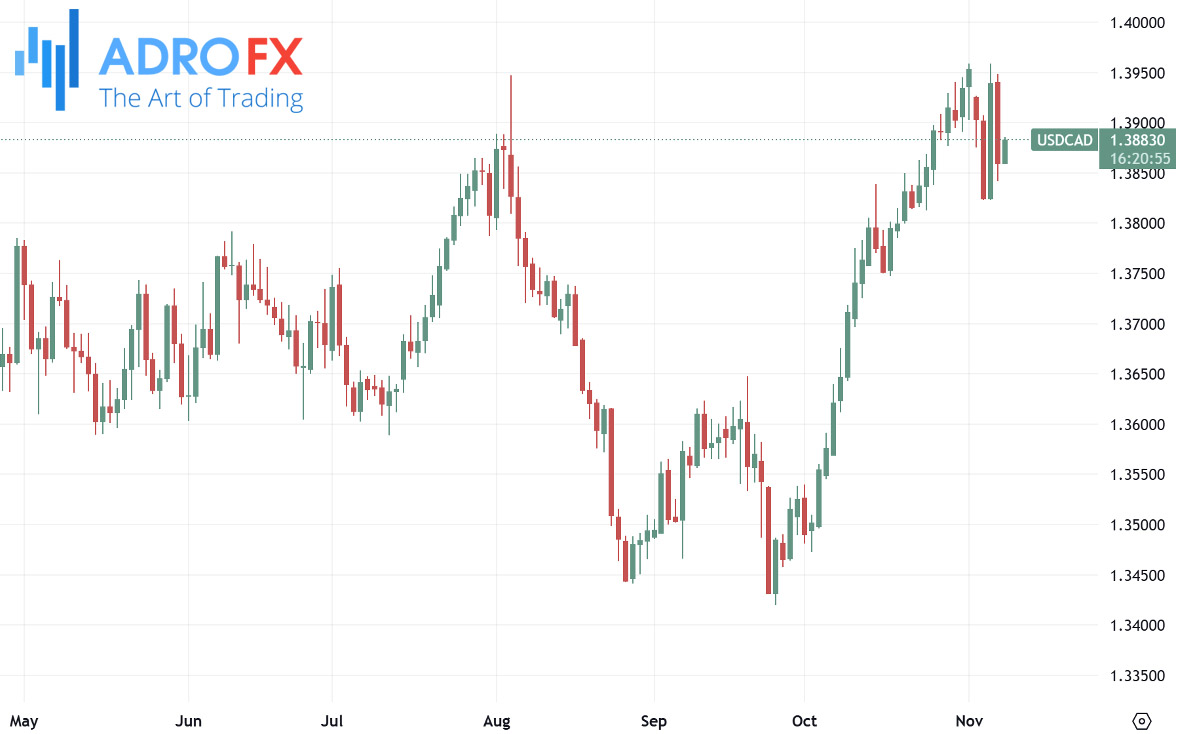
Elsewhere, the British Pound Sterling softened against the US dollar, with GBP/USD slipping to around 1.2975 during Asian trading. The decline follows the Bank of England’s decision to reduce its interest rate by 25 basis points, marking its second cut this year after the bank began easing monetary policy in August. Although the BoE has lowered rates, it also raised its inflation forecast, creating a delicate balance. In a press conference, BoE Governor Andrew Bailey emphasized the importance of a gradual approach to future rate changes, given the uncertain economic outlook.

The Australian Dollar faced slight downward pressure against the USD on Friday, weighed by concerns over possible US tariff increases on Chinese goods. However, the AUD/USD pair still managed to gain over 1% as the USD struggled post-Fed rate cut. Stronger-than-expected Chinese trade data released Thursday lent additional support to the AUD, as Australia’s economy is closely tied to Chinese trade demand.
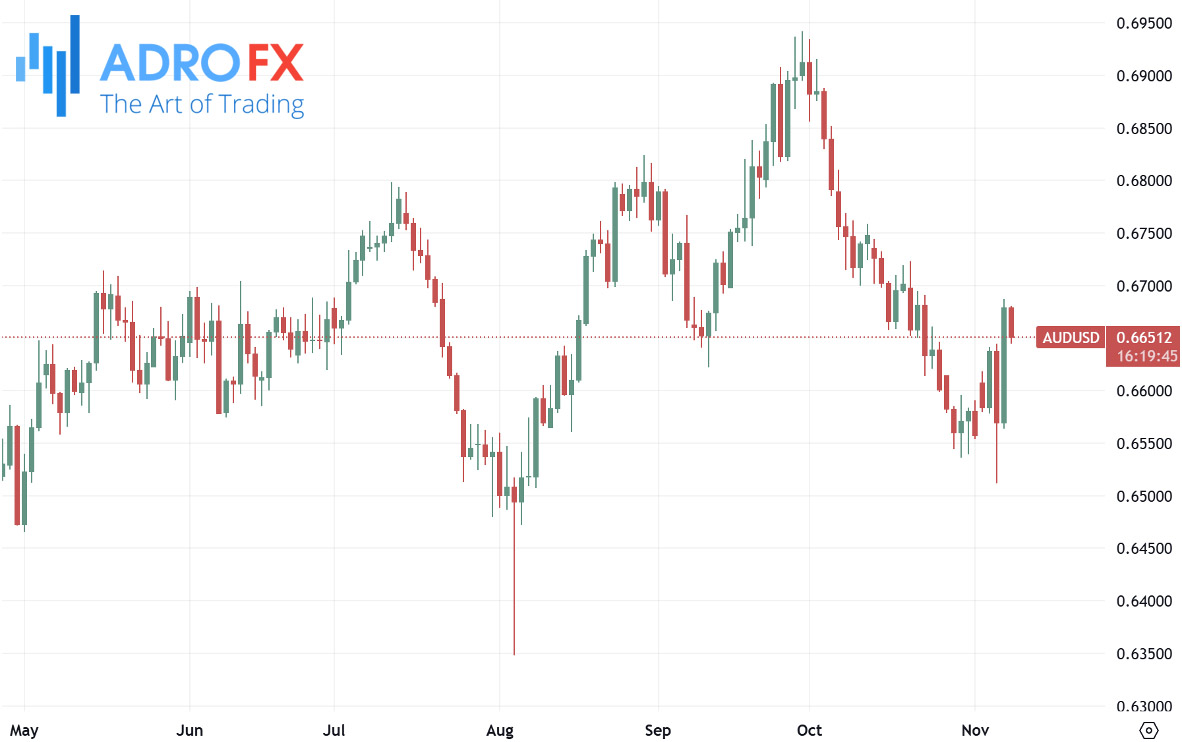
Finally, the Japanese Yen drew dip-buying interest during Friday's Asian session, building on an overnight recovery against the USD after hitting its lowest level since late July. Support for the yen came from comments by Japanese authorities and a dip in US Treasury bond yields. Despite the JPY’s recent strength, Japan’s inflation outlook is muted as the nation reported its second consecutive monthly decline in real wages and household spending for September. This could delay any rate-hike plans from the Bank of Japan, given the central bank’s cautious approach in the current economic environment.
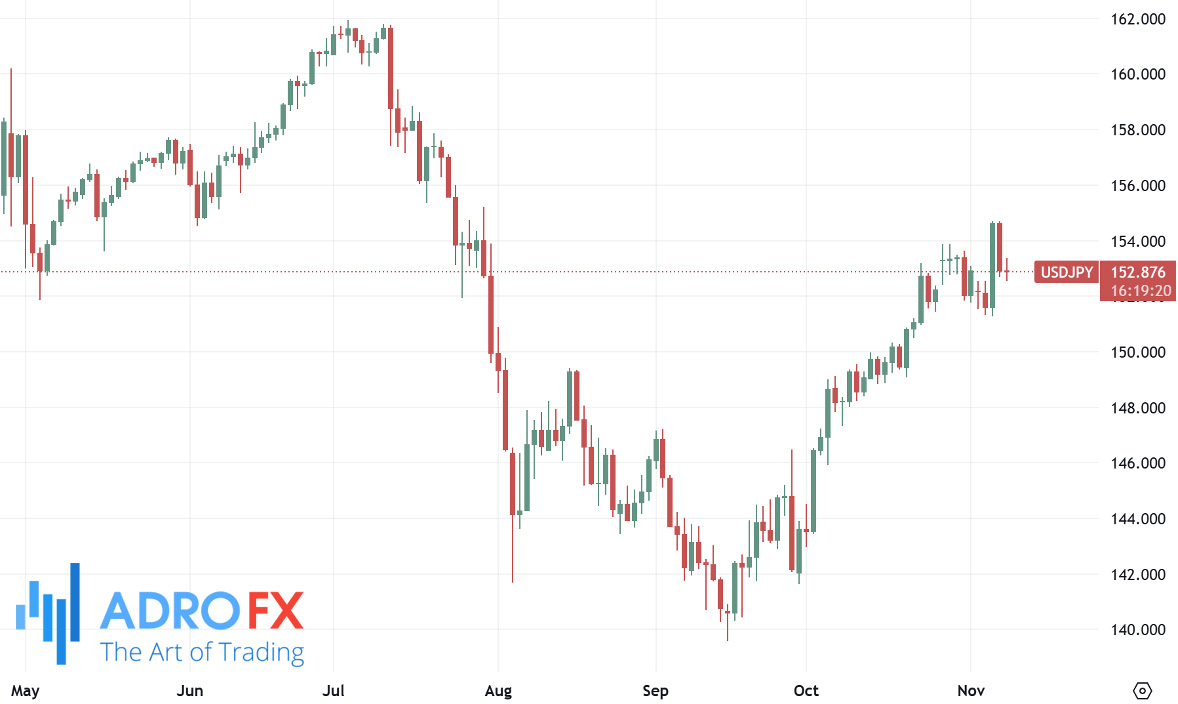
In summary, Thursday’s market action underscores the complex interplay between global central bank policies and their effects on major currency pairs and stock indexes. The S&P 500 and NASDAQ’s record closes highlight continued investor optimism, though key indicators like jobless claims and consumer sentiment are closely watched for signs of economic shifts. As the Fed, BoE, and BoJ navigate their respective economies, the resulting market moves promise to keep traders and investors engaged in the months ahead.
